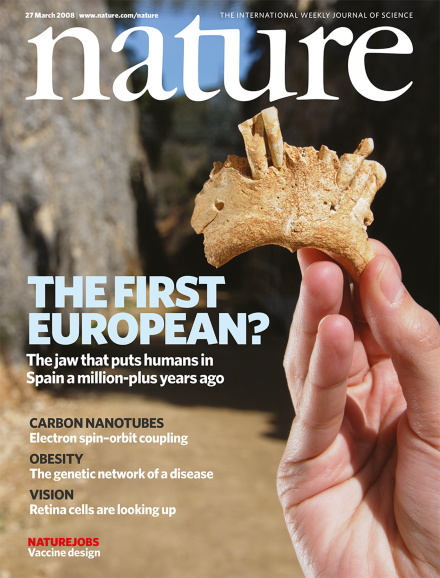Volume 452 Issue 7186, 27 March 2008
Editorial
Research Highlights
Journal Club
News
News in Brief
News
News in Brief
News Feature
Correspondence
Books & Arts
News & Views
Article
Letter
-
The first hominin of Europe
Collection:

